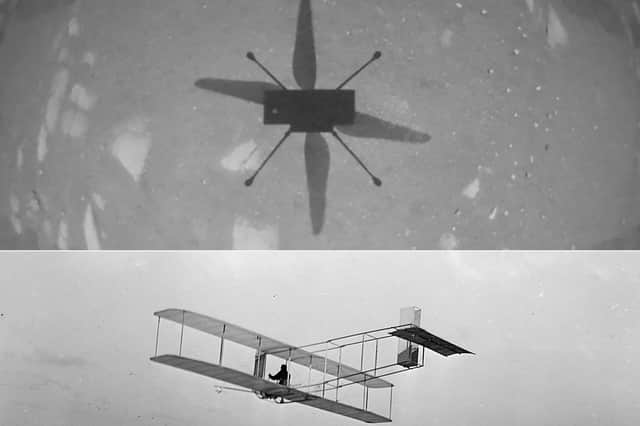Mars helicopter flight by Nasa is a landmark achievement that brings greatest moment in all human history a step closer – Scotsman comment


On December 17, 1903, at Kitty Hawk, North Carolina, the Wright Brothers famously made the first-ever sustained, powered flight.
And now, more than 117 years later, Nasa has pulled off another landmark achievement: the first powered, controlled flight by an aircraft on Mars
Advertisement
Hide AdAdvertisement
Hide AdThe flight itself was a fairly low-key affair. The small helicopter or drone, Ingenuity, rose to an ‘altitude’ of about three metres, turned around and then landed, spending just 40 seconds in the thin Martian air.
However, more adventurous journeys from the new 'airstrip’, which has been named “Wright Brothers Field”, are planned for the coming days.
To date, Mars exploration has been largely carried out by taking pictures from Earth, from satellites in orbit around the planet or by rather ponderous, surface-bound rovers.
The ability to fly around will dramatically increase the area that can be investigated, which should help scientists answer fundamental questions like whether there are any signs of life.
It also creates a practically useful tool for those planning to send astronauts on the 34-million-mile trip to Mars.
Nasa is first going to return to the Moon to “test new tools, instruments and equipment that could be used on Mars, including human habitats, life support systems, and technologies and practices that could help us build self-sustaining outposts away from Earth”.
Make no mistake, we are slowly but surely moving towards the biggest moment in all human history and the day when we finally escape our terrestrial bonds and set foot on another planet.
Comments
Want to join the conversation? Please or to comment on this article.